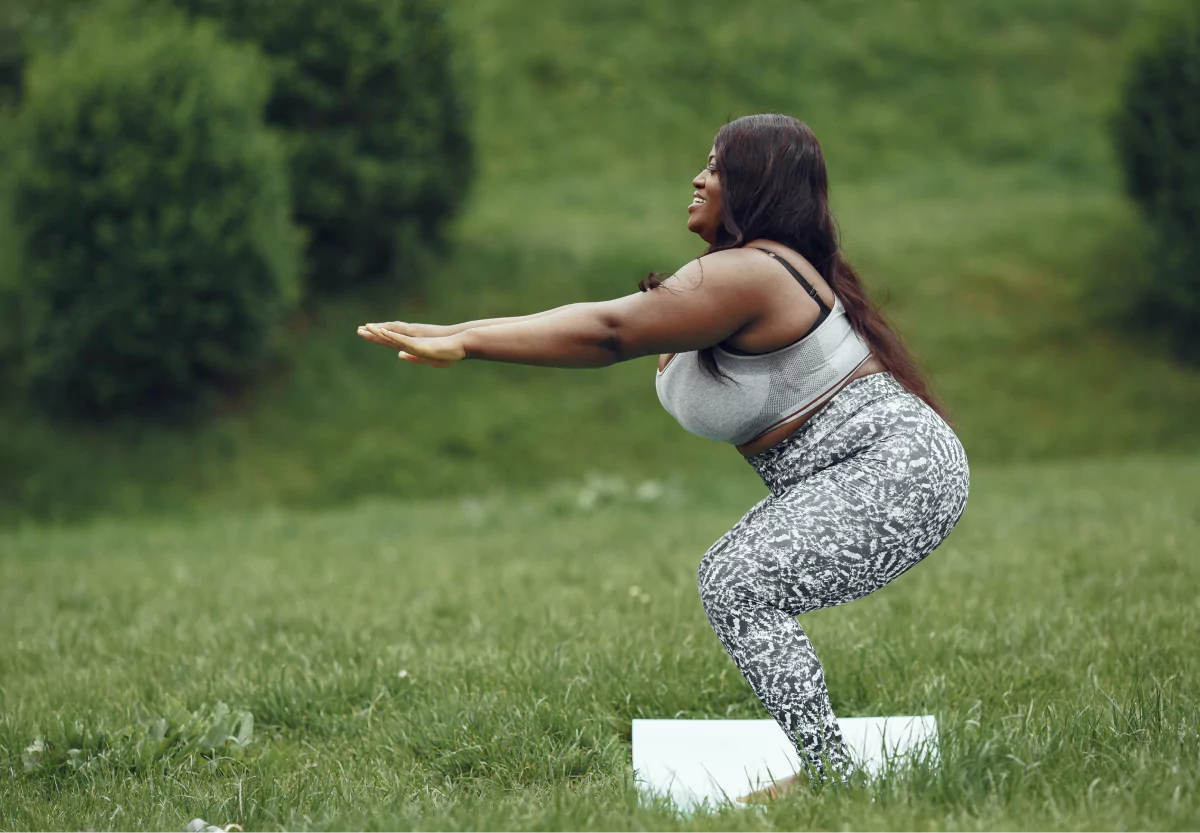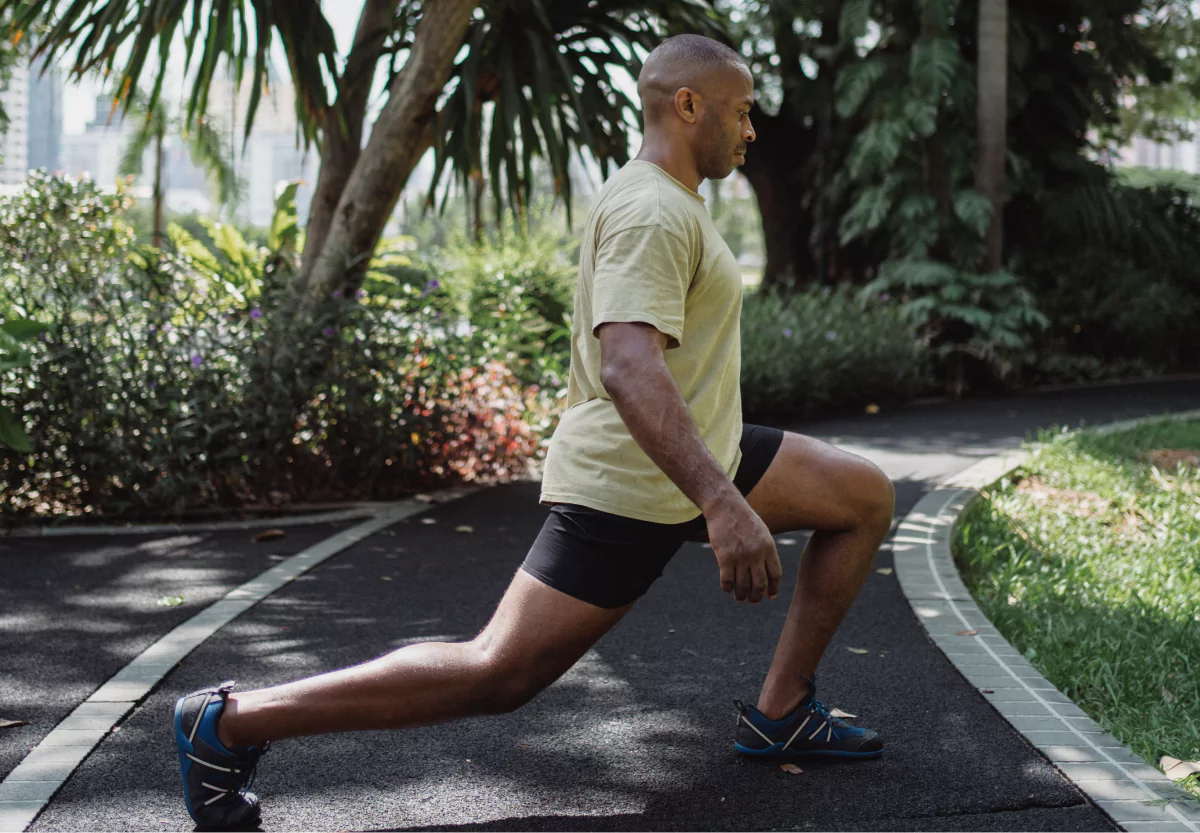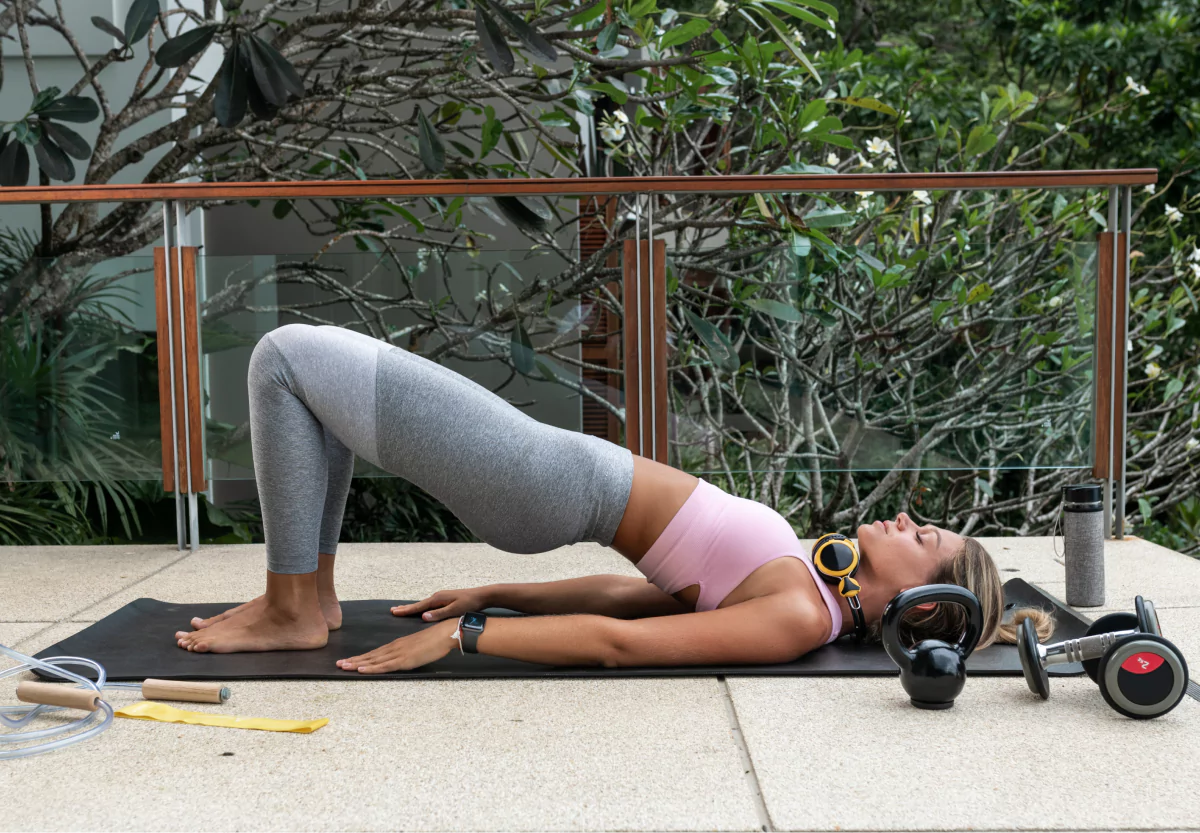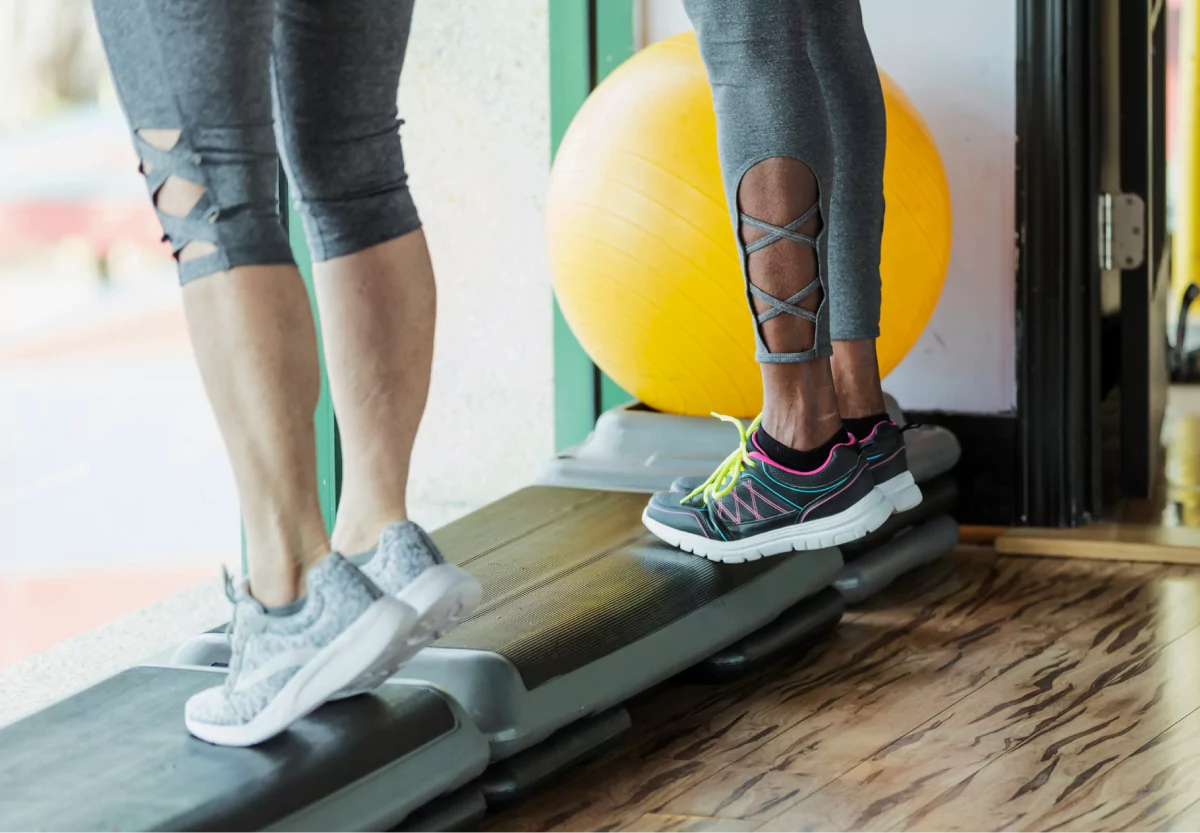Strength Training for Runners: Benefits and Tips for Success
.webp)
Key Takeways
Strength training is an important part of any well-rounded fitness routine. While many runners focus on mileage or endurance, incorporating strength training into your regimen can also yield numerous benefits.
In this article, we’ll delve into the reasons why runners should focus on strength training, and even share a sample strength training program for runners to help you incorporate these exercises in your routine. Let’s get into it!
4 Benefits of Strength Training for Runners

From enhanced performance to injury prevention, strength training can play an important role in a runner’s routine, whether you’re training for a half marathon or even just going out for an easy jog. Here are some of the key benefits of strength training for runners:
Injury Prevention
Strengthening your muscles can play an important role in injury prevention. It can help runners avoid injury by:
- Aiding in the development of proper muscle support
- Increasing balance stability
- Cushioning impact
- Strengthening the specific muscles needed to run safely
The health of your joints can also depend on the strength of the muscles surrounding them. Strong muscles surrounding the joints provide stability and support, reducing the stress placed on the joints during running and lowering the risk of injury.
Increased Overall Performance
Strength training exercises target specific muscle groups and lead to increased muscle strength and power. Stronger muscles generate more force, which can improve speed, acceleration, and endurance during running, helping you to become a better runner.
Lifting weights can improve endurance, which enables runners to resist fatigue and sustain their performance during middle- or long-distance running or intense training sessions.
Improves Overall Health

Strength training combined with running provides a holistic approach to improving overall health. Running is a cardiovascular exercise that promotes many aspects of health, including heart health, insulin sensitivity, blood pressure, and cholesterol.
Strength training has been shown to reduce all-cause mortality and benefit bone and joint health. Combining cardiovascular exercise with weight training has also been shown to benefit weight loss and mental well-being.
Better Running Form
Strength training can improve running form, which can benefit your overall running economy and prevent injuries. A strong core can improve posture, while lower body strength training can help improve stability and balance, which is crucial for good running form.
Incorporating single-leg exercises can also help you strengthen your muscles, correct imbalances, and improve your form as you run.
How Often Should Runners Be Doing Strength Training?

The frequency of strength training for runners can depend on many factors, including the runner's experience, fitness level, and workout goals. The American Heart Association suggests incorporating strength training into your workout routine at least two days per week.
This is a great starting point for a beginner. As you become more accustomed to the exercises, you can gradually increase the frequency and intensity of your strength training.
How Runners Can Integrate Strength Training Into Their Exercise Schedule

When integrating strength training into a weekly running schedule, remember that balance is key. Here's an example of a well-rounded strength workout routine and training plan for runners:
Day 1: Easy Run, Rest or Active Recovery
- Take a day off from running or engage in low-impact activities, like yoga or light stretching to aid in recovery.
Day 2: Running Workout
- Go for a moderate-intensity run focusing on distance or speed, depending on your training goals.
Day 3: Strength Training
- Engage in a full-body strength training session that targets major muscle groups used in running. It may include exercises like squats, lunges, push-ups, planks, and core exercises.
- Make sure to allow for proper rest between sets and exercises.
Day 4: Running Workout
- Go for a shorter, higher-intensity run focusing on speed, intervals, or hill repeats.
- After the run, perform a cool-down routine and incorporate light stretching to aid in recovery.
Day 5: Rest or Cross-Training
- Take a day off from running or engage in cross-training activities such as swimming, cycling, or an alternative aerobic workout to give your body a break from running-specific stress.
Day 6: Strength Training
- Focus on specific muscle groups that are used in running. Exercises may include calf raises, glute bridges, and lunges.
Day 7: Long Run
- Go for a longer-distance run at a moderate pace to build endurance and stamina.
- After the run, perform a thorough cool-down routine and incorporate light stretching to aid in recovery.
Remember that this is just one example of a workout routine, and the specific schedule and exercises can be adjusted based on your preferences, training goals, and individual needs. It's essential to listen to your body and prioritize proper recovery.
For example, if you’re in the midst of marathon training, your schedule may be a bit different from someone who is just starting out on their running journey. If you’re new to resistance training, you may want to start with bodyweight exercises and build up to heavier weights with the help of a qualified personal trainer.
10 Great Strength Training Exercises for Runners
To reap the maximum benefits from strength training as a runner, incorporating the right exercises is important. Keep in mind that you’ll want to warm up properly before doing any strength training and make sure to cool down fully once you’re done.
Here are 10 strength training exercises that runners should consider adding to their workout plan:
1) Squats

Squats are a strength training exercise that target the lower body muscles, including the quadriceps, hamstrings, glutes, and calves. To perform squats:
- Stand with your toes facing forward and your feet a little wider than hip-width apart.
- Driving your hips back, bend at the knees and ankles, bringing your body into a squat position while keeping your heels and toes on the ground.
- Press into your heels and straighten your legs, returning to the starting position and repeat.
2) Lunges and Reverse Lunges

Lunges and reverse lunges target many of the lower body muscles involved in running. They also require stability and balance, which can benefit running form. To perform lunges:
- Stand with your hands on your hips, both legs straight, and your feet staggered, with your right foot about two feet in front of your left.
- Bend your knees and lower your body straight down until your back knee is a few inches from the ground.
- With your weight on the heel of your front foot, push back up to the starting position and repeat on the other side.
3) Planks

Planks are a core-strengthening exercise that engage the abdominal muscles, obliques, and lower back muscles. A strong core plays a crucial role in running, helping runners maintain proper posture and form. To perform planks:
- Start facedown with your pelvis and lower body on the ground, your forearms and toes on the floor, and your torso slightly lifted.
- Engage your core to maintain a straight line from your ears to your toes.
- Hold the position for your desired length of time, from 10 seconds up to one minute.
4) Glute Bridges

Glute bridges are a lower body exercise that primarily targets the gluteal muscles, which can benefit running power and stability. To perform glute bridges:
- Lie face up on the floor with your knees bent, your arms at your side, and your feet flat on the floor. Your heels should be about six inches away from your glutes.
- Push through your heels and lift your hips off the floor until your body forms a straight line from shoulder to knees.
- Slowly lower your hips back to the starting position and repeat.
5) Mountain Climbers

Mountain climbers are a dynamic, full-body exercise that primarily targets the core muscles, and can even be used as a form of cardio. To perform mountain climbers:
- Start in a high plank position with your hands shoulder-width apart and your feet hip-width apart.
- Bring your right knee towards your chest, keeping your left leg extended.
- Quickly switch legs, bringing your left knee towards your chest and extending your right leg.
- Continue alternating legs, moving at a fast pace as if you are climbing a mountain.
6) Calf Raises

Calf raises are a simple and effective strength training exercise that directly target and strengthen the calf muscles, which play a crucial role in running. To perform calf raises:
- Stand upright with your back straight and your feet shoulder-width apart.
- Slowly raise your heels off the floor, keeping the legs straight, until you are as far on the tips of your toes as you can comfortably be.
- Hold for two seconds, then slowly lower your heels back to ground and repeat.
7) Russian Twists

Russian twists are a core-strengthening exercise that targets the abdominal muscles, particularly the obliques. To perform russian twists:
- Sit on the floor with your legs in front of you and knees bent.
- Lean your torso back and lift your feet from the floor, so that your body creates a V shape.
- Keeping your legs stationary and holding your hands together, twist your torso to the right, then back to center, then to the left. Repeat.
8) Resistance Band Exercises

Resistance band exercises involve using elastic bands to provide resistance during strength training workouts. They provide a low-impact form of strength training that is gentle on the joints, making them ideal for runners. To perform resistance band exercises:
- Use a resistance band appropriate for your fitness level.
- Secure the band around a sturdy anchor point or step on it with your feet, holding the handles or gripping the band itself.
- Perform various exercises like bicep curls, squats, lateral walks, or rows.
9) Rows

Rows are a common strength training exercise that target the muscles of the upper and middle back. They help improve posture, upper body strength, and stability. They can be performed using various equipment, such as dumbbells, barbells, or resistance bands. To perform rows:
- Start by standing with your feet shoulder-width apart, holding a dumbbell in each hand with your palms facing inward.
- Bend your knees slightly and lean forward, maintaining a straight and neutral spine.
- Pull the dumbbells up towards your chest, keeping your elbows close to your body.
- Pause for a moment, and then slowly lower the dumbbells back to the starting position and repeat.
10) Lat Pulldowns

Lat pulldowns are a strength training exercise that primarily target the latissimus dorsi muscles, also known as the lats. They also engage other muscles of the back, shoulders, and arms. To perform lats:
- Sit on a lat pulldown machine, ensuring your knees are firmly positioned under the pads and your feet are flat on the ground.
- Grasp the wide bar or handle attachment with an overhand grip, hands slightly wider than shoulder-width apart.
- Pull the bar or handle down towards your chest, focusing on squeezing your shoulder blades together.
- Once the bar or handle reaches your upper chest, pause for a moment, then slowly return to the starting position and epeat.
What Else Should Runners Do For Optimal Health and Performance?
In addition to strength training, runners may also benefit from using a continuous glucose monitor or CGM. A CGM is a small device that continuously measures your glucose levels and provides real-time data on how your body responds to various factors, including diet, exercise, and stress.
A CGM can provide runners or athletes of all kinds with valuable insights into their blood sugar levels throughout the day, including during exercise. By monitoring glucose levels in real-time, runners can make informed decisions about their nutrition and workout routines.
CGMs can also provide valuable insights into how other lifestyle factors affect blood sugar levels. By understanding these correlations, you can make informed choices that benefit your health, recovery, and well-being.
Find the right Nutrisense programto turn insight into progress.
Go Beyond Glucose Data with Nutrisense
Your glucose can significantly impact how your body feels and functions. That’s why stable levels are an important factor in supporting overall wellbeing. But viewing glucose isn't enough. Nutrisense, you’ll be able to learn how to use your body's data to make informed lifestyle choices that support healthy living.
One-to-one coaching
Sign up to access insurance-covered video calls to work with a glucose expert: a personal registered dietitian or certified nutritionist who will help tailor your lifestyle and diet to your goals.
Monitor and measure what matters
With the Nutrisense CGM Program, you can monitor your glucose with health tech like glucose biosensors and continuous glucose monitor (CGM)s, and analyze the trends over time with the Nutrisense App. This will help you make the most informed choices about the foods you consume and their impact on your health.
Find your best fit
Ready to take the first step? Start with our quiz to find the right Nutrisense program to help you take control.

Heather is a Registered and Licensed Dietitian Nutritionist (RDN, LDN), subject matter expert, and technical writer, with a master's degree in nutrition science from Bastyr University. She has a specialty in neuroendocrinology and has been working in the field of nutrition—including nutrition research, education, medical writing, and clinical integrative and functional nutrition—for over 15 years.




